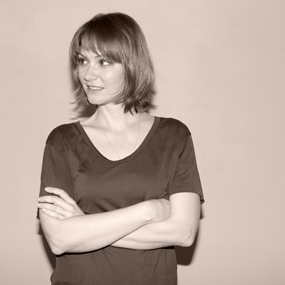The ongoing romance with Deco glamour, from the 1960s to the 1990s
An Affair to Remember
To those of us born in the blitzes of 1940, the twenties and thirties were represented by our parents as a golden age… We were left with a voyeurish, almost morbid fascination with the period.
—Bevis Hillier, pioneering Art Deco historian and curator, often credited with coining the term “Art Deco,” quoted in Minneapolis Star, 1971
Sometimes it seems as if half the country would like to be dancing cheek to cheek with Fred Astaire and Ginger Rogers in a great ballroom of the ’30s.
—“The Meaning of Nostalgia” by journalist Gerald Clark, Time Magazine, 1971
As World War II (1939-1945) prompted massive industrial mobilization and introduced unprecedented technological innovation, the rationalist, functionalist principles of modernist design all but eclipsed the glamorous allure of the Art Deco style. In the early postwar era, some furniture producers worldwide remained committed to the bespoke, decorative, and artisanal aspects of Deco, but they were rarely taken seriously by the design cognoscenti at the time—those who wrote the magazine articles, curated the museum exhibitions, and influenced the tastes of large populations. Art Deco would have died out completely, it seems, had it not been for the generation that came of age in the 1960s, born during and just after the style’s original heyday.
The mid-to-late ’60s presented a melting pot of conditions favorable to the revival of the Art Deco style. The postwar economic boom had slowed, metastasizing into a global recession by the 1970s. The faith in progress and general optimism that characterized the 1950s—and that fed the proliferation of the international modernist movement—began to fade with the emergence of social justice and counterculture movements that vociferously called out the shortcomings of capitalism, consumerism, and conformity. Scores of young people, dissatisfied with the present, looked back longingly to an era that they knew only through old movies and pre-modernist art. As a result, institutions in Europe and the US began to spotlight cultural relics from the Victorian era through the 1930s. The film industry put out a number of stylish period films, such as Bonnie & Clyde (1967) and The Great Gatsby (1974). And fashion designers like Barbara Hulanicki of Biba mined Jazz Age silhouettes.
Amid this climate of nostalgia, antiques dealers found audiences hungry for Deco décor, notably among international jetsetters like Yves Saint Laurent and Elton John. Young designers, especially in Italy and the UK, began to reject what they saw as the soulless, rigid, anti-historicist attitude of modernism and planted the foundations for the postmodern Radical Design movement, which aimed to expand the definition of utility to embrace more humanistic, romantic, and pro-social ideals. And so it passed that for the remainder of the 20th century, a remix of Art Deco-style forms, proportions, materials, and motifs would keep popping up in a variety of contexts.
Read on to discover some of our favorite moments of late-20th-century Deco devotion.
Space Age Deco
In the 1960s, a handful of modernist designers began to exploit brand new, moldable materials to create generously proportioned, biomorphic designs that celebrated languid repose—what today we think of as the Space Age look. Designers like Pierre Paulin, Joe Colombo, and Verner Panton weren’t looking to the Art Deco era for inspiration—they still embraced the modernist, anti-historicist stance—but their drive to create experimental total environments for a brave new world often resulted in pieces and interiors that exude a sexy, undulating Streamline Moderne vibe. And their unapologetic use of vibrant colors, reflective surfaces, and, in some cases, wild patterns demonstrated that the pendulum of design taste was swinging back toward pre-modernist sumptuousness.
Italian Sophisticates of the 1970s
By the 1960s, numerous Italian designers and brands emerged as global influencers, and the “Made in Italy” label became an international value proposition. With so much national talent and opportunity in the mix, design in Italy in the 1970s reached an extraordinary level of refined sophistication. The generation of architect-designers that graduated university during the postwar boom, including Gae Aulenti, Cini Boeri, Vico Magistretti, Angelo Mangiarotti, and Tobia and Afra Scarpa—all deeply steeped in their uniquely fertile design culture—transcended the naiveté of early midcentury modern design by masterfully blending reduced forms with rich materials and subtle yet magnetic aesthetic touches. Without articulating a radical stance, they showed that the archetypal shapes of solid geometry need not be boring and that the decorative need not preclude the functional.
La Dolce Vita
While many Italian designers in the 1970s walked a fine line between restraint and embellishment, others decided it was high time to go all in on a return to Art Deco-style opulence, most notably Gabriella Crespi and Willy Rizzo (both of whom were Italian by birth but were oft found in Paris or other exotic locales around the world). Glamour was the name of the game, and it was played to full effect through designs handcrafted in brass, stainless steel, burled woods, rattan, semiprecious stones, travertine, leather, goatskin, and velvet. With this ’70s-era work, the relationship to the genesis of the Deco style was direct, and its jetsetting fans overlapped with those who spurred the trend for collecting the original Deco antiques. Other designers who belong to this moment of chicness, which some call a cousin to Hollywood Regency , include Romeo Rega, Massimo Papiri , Maria Pergay, Maison Jansen, and Maison Charles, to name just a few.
Radical Deco
Between the mid-1960s and the mid-1980s, the Radical Design movement championed what came to be known as postmodern principles; its proponents believed that modernism’s insistence on pure utilitarianism, lack of ornamentation, mass production, and by extension mass consumerism was engendering living environments devoid of soul and meaning. The solution for them was to riff on an array of historical styles and motifs while exploring ideas found in Pop Art, pop culture, and Eastern religions, all the while mixing high and low materials with abandon. In particular, the geometric ornaments, the busy, looping patterns, and the stepped, skyscraper-inspired forms of ’20s and ’30s Deco furniture and lighting were regularly reinterpreted by the likes of Archizoom, Alchimia, Memphis Group, Michael Graves, and other anti-designers. And cutting-edge tastemakers, such as David Bowie and Karl Lagerfeld, became avid collectors.
Millennial Deco (with a Dash of Irony)
The Radical Design movement ran out of juice by the end of the 1980s, and so the century drew to a close with little design discourse around the relevance of historical references or the Art Deco style specifically. Generally, fashion and interiors tended toward the minimal again, and furniture and accessories exhibited an increasing sleekness as new technology and materials became available. The century, however, did not end without a few more nods to our beloved Jazz Age, often accompanied by a wink from the designer. One of Marc Newson’s earliest (and now most valuable) works, for instance, Pod of Drawers (1987), is a hand-welded, punk-rock remake of André Groult’s Art Deco Chiffonier from 1925. During the 1990s, Ron Arad’s penchant for pre-modern forms, such as overstuffed seating, manifested itself in reinterpretations often composed in hard materials like metal and plastic—not unlike the early work of design jester Philippe Starck, who became famous for making a lemon juicer as aerodynamic as a zeppelin. And we can’t forget Starck’s iconic interiors for Schrager Hotels, which included the glamorous Delano in Miami Beach and Clift in San Francisco, among others.
Check out Part III of our Deco series, when voluptuous proportions, undulating shapes, dramatic patterns, fine craftsmanship, and sumptuous materials continue into the 21st century, thanks to a selection of well known and upcoming contemporary designers turning heads with Deco inspired designs. And if you missed Part I, covering the origins of the Art Deco movement, you can find it here.
-
Text by
-
Wava Carpenter
After studying Design History, Wava has worn many hats in support of design culture: teaching design studies, curating exhibitions, overseeing commissions, organizing talks, writing articles—all of which informs her work now as Pamono’s Editor-in-Chief.
-
-
Text by
-
Rachel Miller
Rachel is a California native whose passion for travel has led her on some pretty crazy adventures around the world. After living in Korea for three years, she decided on a whim to move to Germany. While she still has a wandering soul, Berlin has captured her heart, and she's decided to make this multicultural hub her permanent home. Most of her free time is spent playing beach volleyball, exploring the city's many arty scenes, and hunting down Berlin's best craft beer.
-
More to Love
Kaleidoscope Floor Lamp by Gabriella Crespi, 1970s

Black Lacquered Wood & Yellow Velvet Chairs by Willy Rizzo, 1970s, Set of 6
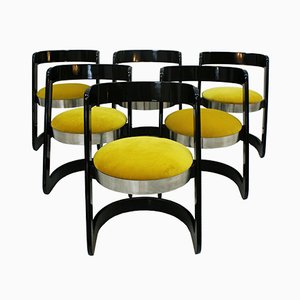
Mid-Century Blue Cotton Velvet Soriana Sofa by Tobia Scarpa for Cassina, 1960s

Vintage K2 Wire Cone Chair by Verner Panton for Plus Linje, 1950s

Bamboo & Brass Dining Table, 1970s

Africa Chairs by Afra and Tobia Scarpa, 1970s, Set of 8
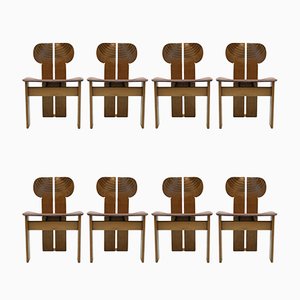
Brutalist Dark Mahogany Bar Cabinet, 1970s

Vintage Brutalist Stained Oak High Cabinet with Graphic Door Panels
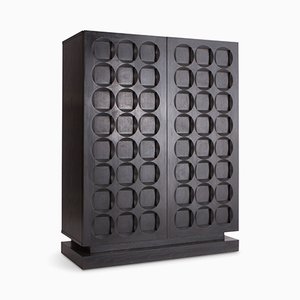
Soriana Blue Velvet Sofa by Afra & Tobia Scarpa for Cassina, 1970s

Chandelier in Murano Glass by Angelo Mangiarotti, 1970s
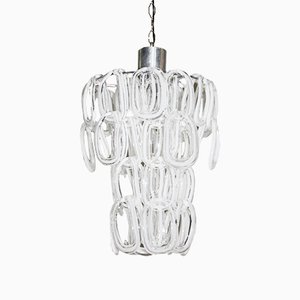
Vintage Bay Table Lamp by Ettore Sottsass for Memphis

Vintage Bastiano Lounge Chairs by Tobia & Afra Scarpa for Knoll International, Set of 2


